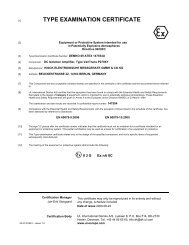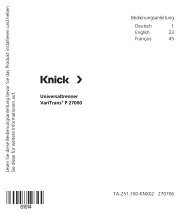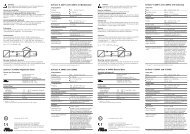Maconic Shunt Resistors - Knick USA
Maconic Shunt Resistors - Knick USA
Maconic Shunt Resistors - Knick USA
- No tags were found...
You also want an ePaper? Increase the reach of your titles
YUMPU automatically turns print PDFs into web optimized ePapers that Google loves.
<strong>Maconic</strong> <strong>Shunt</strong> <strong>Resistors</strong>UsageIn many areas of applications the useof shunt resistors has established itselfas a reliable, precise and long-termstable solution for continuous measurementof DC current. The low voltagedrop across the shunt resistor is directlyproportional to the flowing current. Itis sensed by a specially designed shuntisolator, where it is converted to a standardsignal and output as a measureof the current for further processing incontrollers or displays.DC currents are measured in a diverserange of applications, includingphotovoltaics, power supply of publictransport systems, control of motorsand generators, DC busses of inverters,welding equipment, and generally insystems with high DC currents.TaskThe currents to be measured areassociated with system voltages (potentials)which must be safely separated,i.e. galvanically isolated by the shuntisolator. Here, it is important that thevoltage measurement is not affected bycommon mode influences. This can beachieved even for shunt voltages as lowas 60 mV by suitably designed shuntisolators. Higher shunt voltages arenot necessary with high-quality shuntisolators and because of the physicallylarger shunt resistors they are generallynot desired.Particularly for high currents, the loss inthe shunt resistor must be very low toprevent excessive heating. In any case,the resistance of the shunt should beas constant as possible with changingtemperatures. The shunt resistor mustbe insensitive to corrosion or otherenvironmental effects. Here, specialattention must be paid to materialand workmanship.2





